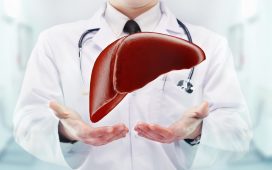Thromboembolic risk lower for postoperative atrial fibrillation s/p CABG versus nonvalvular a-fib
THURSDAY, March 29, 2018 (HealthDay News) — For patients post coronary artery bypass graft (CABG) surgery, new-onset postoperative atrial fibrillation (POAF) is associated with lower long-term thromboembolic risk than that seen among patients with nonvalvular atrial fibrillation (NVAF), according to a study published online March 28 in JAMA Cardiology.
Jawad H. Butt, M.D., from Copenhagen University Hospital in Denmark, and colleagues used data from a clinical cardiac surgery database and Danish nationwide registries to identify patients undergoing first-time isolated CABG surgery who developed new-onset POAF. A total of 2,108 patients who developed POAF were matched to 8,432 with NVAF.
The researchers found that oral anticoagulation therapy was initiated within 30 days post-discharge in 8.4 and 42.9 percent of those with POAF and NVAF, respectively. The POAF group had a significantly lower risk of thromboembolism (18.3 versus 29.7 events per 1,000 person-years; adjusted hazard ratio, 0.67). In both patients with POAF and NVAF, anticoagulation therapy during follow-up was associated with reduced risk of thromboembolic events (adjusted hazard ratios, 0.55 and 0.59, respectively) compared to patients who did not receive any anticoagulation therapy. The risk of thromboembolism was not significantly higher in patients with POAF versus those who did not develop POAF.
“These data do not support the notion that new-onset POAF should be regarded as equivalent to primary NVAF in terms of long-term thromboembolic risk,” the authors write.
Several authors disclosed financial ties to the pharmaceutical industry.
Editorial (subscription or payment may be required)
Copyright © 2018 HealthDay. All rights reserved.








